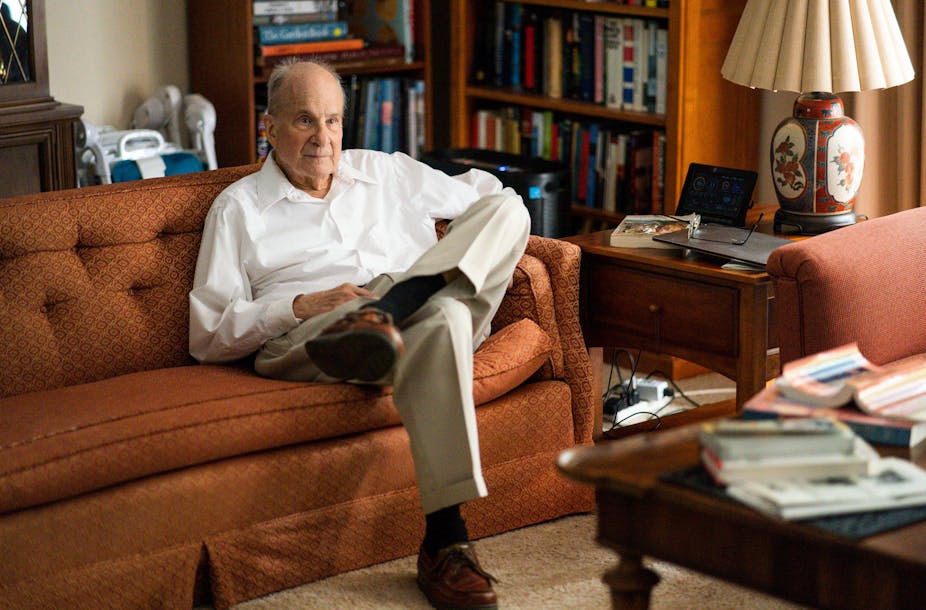Imagine a particle so small that it’s the same relative size to a football as that ball is to the planet Earth. That’s the size of a quantum dot – a type of nanocrystal that changes colour depending on its size, and was once thought impossible to actually produce.
Today, they’re found in some high-definition television and computer screens, and are used in medicine to map what’s happening in cells and even tumours. And three scientists who helped discover and produce these quantum dots have now been awarded the 2023 Nobel prize in chemistry.
In this week’s episode of The Conversation Weekly podcast, we speak to Louis Brus, one of these new Nobel laureates and an emeritus professor of chemistry at Columbia University in New York, about his work on quantum dots and what winning the accolade means to him.
Brus wasn’t actually looking for quantum dots, the particles that would go on to win him a Nobel prize, when he first discovered them. “We knew that they existed, at least in principle … but I wasn’t trying to do this,” he tells us. It was the early 1980s and Brus was working at Bell Labs, an American industrial research company famous for its long list of alumni who have gone on to win a Nobel prize.
Brus was mixing up solutions containing different types of semiconductor particle, aiming lasers at them to see what kind of photochemistry would happen on their surfaces. “I noticed that the property of the particle itself began to change at a very small size,” he remembers. What he’d observed were quantum dots: nanocrystals that absorb light and emit it at another wavelength, with the colour changing depending on the size of the particle.

Brus wasn’t the first scientist to have observed this phenomenon. A Russian scientist called Alexei Ekimov had also observed quantum dots in coloured glass a few years earlier, but because of the cold war, Brus was unaware that Ekimov had published journal articles about it in Russian.
“We did not read the journals in the west and he was not allowed to travel to the west to talk about his work,” Brus explains. Ekimov, along with a third chemist Moungi Bawendi, who perfected the synthesis of quantum dots in the 1990s, now share the 2023 Nobel prize in chemistry with Brus.
Listen to our full interview with Louis Brus on The Conversation Weekly podcast to hear more about his discovery, its applications, and his advice for young chemists starting out today.
A transcript of this episode is now available.
This episode was written and produced by Gemma Ware and Katie Flood with assistance from Mend Mariwany. Eloise Stevens does our sound design, and our theme music is by Neeta Sarl. Gemma Ware is the executive producer of the show.
Newsclips in this episode are from the Nobel Prize.
You can find us on Twitter @TC_Audio, on Instagram at theconversationdotcom or via email. You can also subscribe to The Conversation’s free daily email here.
Listen to The Conversation Weekly via any of the apps listed above, download it directly via our RSS feed or find out how else to listen here.

